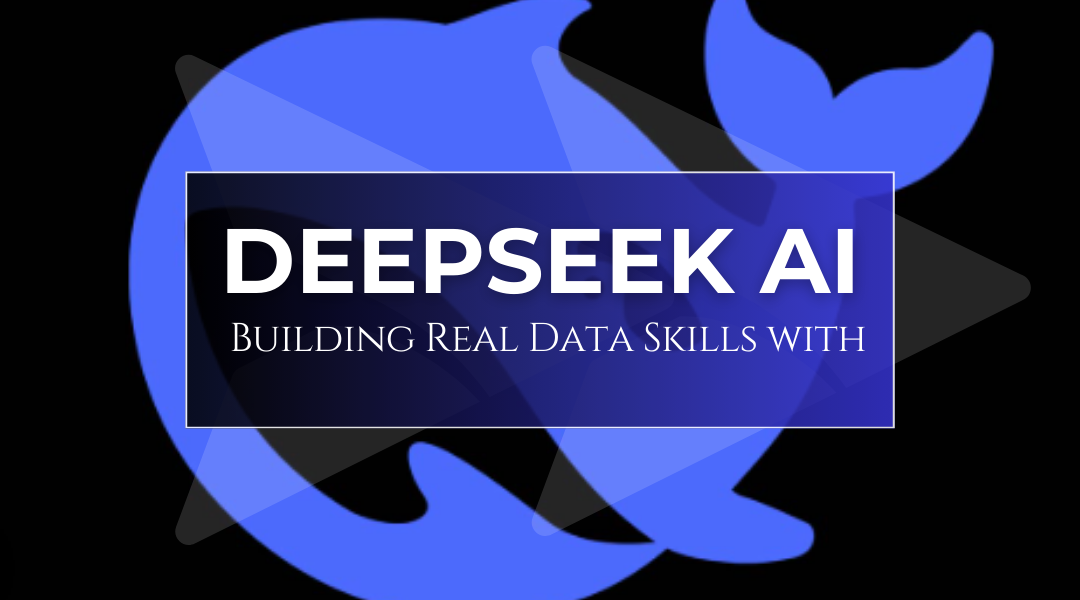So, you want to break into data science and machine learning? It’s one thing to understand the theory behind a random forest or a neural network; it’s another thing entirely to build one that delivers actionable insights on messy, real-world data. This is where the real learning happens, and it’s exactly what platforms like DeepSeek AI are built to facilitate.
Let’s talk about how you can move beyond textbook exercises and use DeepSeek to cultivate the practical, hands-on expertise that the industry actually values.
Learning by Doing: The Power of Applied Projects
The fastest way to learn is by getting your hands dirty. DeepSeek’s project library is less of a tutorial and more of a sandbox for experimentation. Instead of just following steps, you’re given a problem and the tools to solve it, forcing you to think like a data scientist.
Let’s Get Practical: Uncovering Customer Sentiment
Imagine you’ve just joined a company’s product team, and they want to understand what users are saying about them on social media. A textbook might define “sentiment analysis,” but DeepSeek would give you a dataset of raw tweets and challenge you to build a classifier from the ground up.
Here’s a taste of what that process might look like, using real code you’d work with:
python
# Import the essentials
import pandas as pd
from textblob import TextBlob
from sklearn.model_selection import train_test_split
from sklearn.ensemble import RandomForestClassifier
from sklearn.metrics import classification_report
# Load some real, messy tweet data
tweets_df = pd.read_csv(‘company_tweets.csv’)
# The fun begins: clean the text, handle emojis, remove URLs
tweets_df[‘clean_text’] = tweets_df[‘text’].apply(lambda x: ‘ ‘.join([word for word in x.split() if not word.startswith(‘@’) and not word.startswith(‘http’)]))
# Do a quick sentiment score with TextBlob as a baseline
tweets_df[‘sentiment_score’] = tweets_df[‘clean_text’].apply(lambda x: TextBlob(x).sentiment.polarity)
# For a more robust model, we’d move to something like TF-IDF and a classifier
# This is where you’d experiment with different approaches in the platform
# Split the data and train a simple model
X_train, X_test, y_train, y_test = train_test_split(tweets_df[‘clean_text’], tweets_df[‘manually_labeled_sentiment’], test_size=0.25)
# (Code here would involve vectorizing the text and training a model)
# Evaluate how your model performed
# print(classification_report(y_test, predictions))
The magic isn’t in the code itself, but in the iterative process: trying a model, seeing it fail, tweaking your text cleaning, trying a different algorithm, and learning why certain approaches work better than others.
Skip the Grunt Work, Focus on Innovation
Building a complex image recognition model from scratch can take weeks. DeepSeek provides access to a hub of pre-trained models and integrated libraries, allowing you to stand on the shoulders of giants. This lets you focus on the creative part—fine-tuning and applying these powerful tools to your specific problem.
For instance, you could quickly leverage a state-of-the-art model for your project:
python
# Utilizing a pre-built vision model to jumpstart a project
from deepseek_vision import load_pretrained_model
# Load a model that already knows how to identify thousands of objects
vision_model = load_pretrained_model(‘efficientnet_v2’)
# Use it to analyze a new set of images for your custom use case
# Perhaps you’re classifying different types of architectural styles?
new_images = load_my_custom_dataset(‘building_photos/’)
predictions = vision_model.predict(new_images)
# Now, you can focus your energy on interpreting these results
# and building an application around them, rather than spending
# weeks training a model from square one.
The Community: Your Built-In Brain Trust
No data scientist is an island. The toughest challenges are often solved by talking through them. DeepSeek’s community forums are where this comes to life. It’s not just a Q&A board; it’s a collaborative workspace.
You might be stuck on why your time-series forecast is overfitting. You can jump into a dedicated thread, share a snippet of your code and your results, and get feedback from someone who’s battled the same issue.
python
# This is the *kind* of code you might share and discuss in a forum
# “Hey team, my LSTM model on sales data is looking great on training but awful on validation. Any ideas?”
# Posted code might look like:
model = Sequential()
model.add(LSTM(units=50, return_sequences=True, input_shape=(X_train.shape[1], 1)))
model.add(Dropout(0.2)) # A community member might suggest: “Try increasing dropout to 0.3 or adding another layer?”
# The discussion that follows is where the real learning happens.
Connecting the Dots with Real-World Case Studies
How is this used in the real world? DeepSeek’s case studies show you exactly that. You get to deconstruct complete projects, from the initial business question to the final data-driven decision.
You might explore how a retail company used clustering algorithms to segment their customer base and personalize marketing, leading to a 15% lift in conversions. You see the entire data pipeline—warts and all—giving you context that isolated exercises never can.
Wrapping It Up: Your Pathway to Expertise
Ultimately, becoming proficient in data science isn’t about memorizing algorithms. It’s about developing a problem-solving intuition. DeepSeek AI accelerates that journey by providing an environment built for applied learning. It gives you the projects to practice on, the tools to build efficiently, a community to learn from, and the real-world context to understand the “why” behind your work.
By diving into its resources, you’re not just learning—you’re building a portfolio of experience that demonstrates you can deliver results, not just write code. That’s what turns a novice into a pro.
